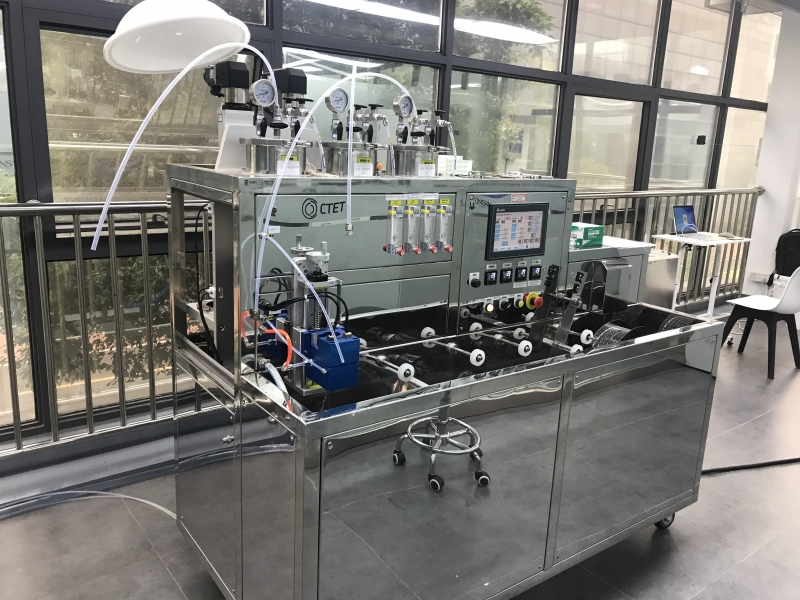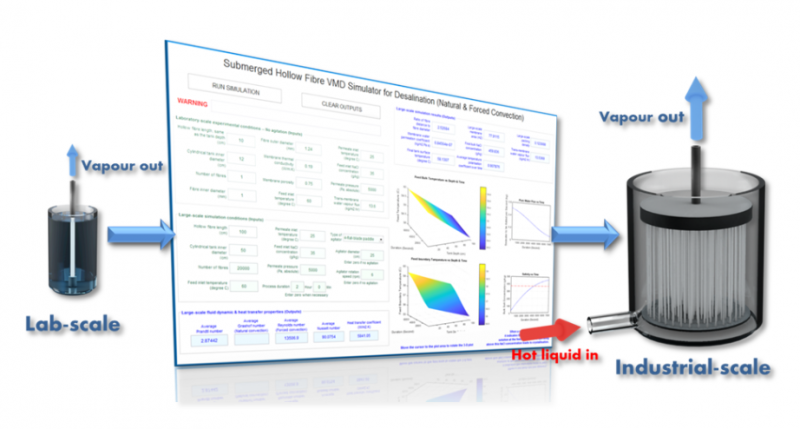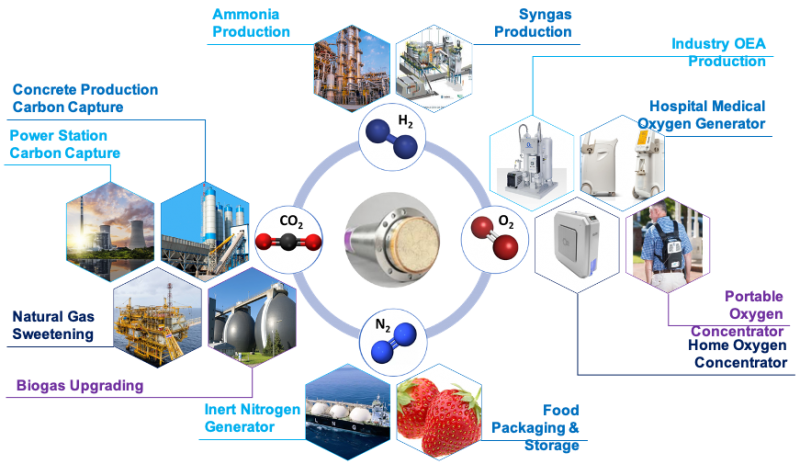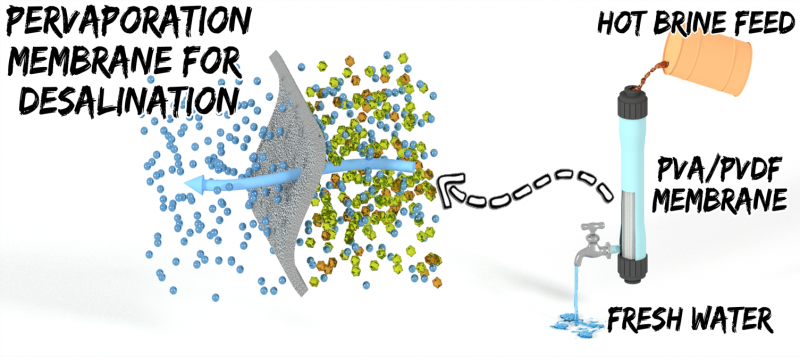Projects
Project 1.
Development of high-precision hollow fibre membrane spinning facility and gas separation membrane for air separation
Integrally skinned non-porous asymmetric hollow fibre membranes are widely used in many industrial applications including gas separation. The challenges for making gas separation membrane are to guarantee the formation of a non-porous, ultra-thin yet defect-free skin layer on top of a porous support substrate with minimal mass transfer resistance, which requires in-depth knowledge on the ternary phase inversion and liquid-liquid de-mixing mechanisms which the membrane formation relies upon. In the meantime, the micro-structure on a molecular level needs to be well controlled to ensure the long-term performance of the membranes. The development of a fully automated and highly precise hollow fibre membrane spinning facility as well as an optimised fabrication protocol provides a pathway to satisfy these rigorous gas separation membrane fabrication requirements. However, due to the lack of know-how on such topics, China is currently heavily dependent on importation of gas separation membrane products to meet its local industrial need.
With this in mind, the current project aims to develop a fully automated high-precision hollow fibre spinning facility (see Fig. 1) to enable the fabrication of integrally skinned non-porous asymmetric hollow fibre membranes. Together with an optimised fabrication protocol, this facility will be able to produce defect-free membranes with structures suitable for air separation. In addition, researchers from CTET have developed simulation software (see Fig. 2) that can aid proper scale-up of the gas separation membrane module and process with better separation performance and energy efficiency, an essential step towards the commercialisation of such products.

Fig. 1 A fully automated high-precision hollow fibre spinning facility built in CTET

Fig.2 Scale-up simulation software developed by CTET
Project 2.
Development of novel membrane materials and equipment for the recycle of wastewater and vapour produced during the traditional Chinese medicine production
Significant amounts of wastewater and vapour are produced during the production of traditional Chinese medicines (TCM), both of which contain large quantities of useful components that should be recycled. In addition, certain toxic components also present in the TCM wastewater which need to be removed prior to discharge to ensure the acute toxicity upper limit (96hLC50) is met as described in the Chinese national standard for TCM wastewater discharge (GB21906-2008).
Considering this, the current project involves the development of an innovative membrane-based process that integrates advanced oxidation processes, membrane bioreactor, membrane pervaporation, and membrane gas separation to tackle the challenges that most TCM pharmaceutical companies are currently facing. With the proposed process, the key concerns of TCM wastewater and vapour discharge and the recycling of useful resources can be resolved. The current project will aid the establishment of a "zero-emission" TCM industrial demonstration park in the Guangdong-Hong Kong-Macao Greater Bay Area.



